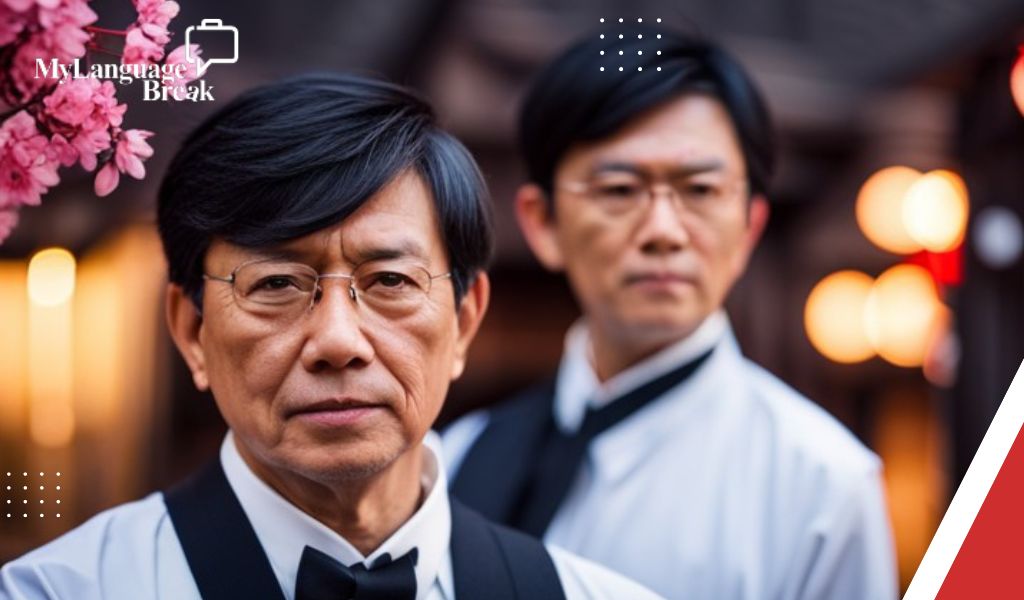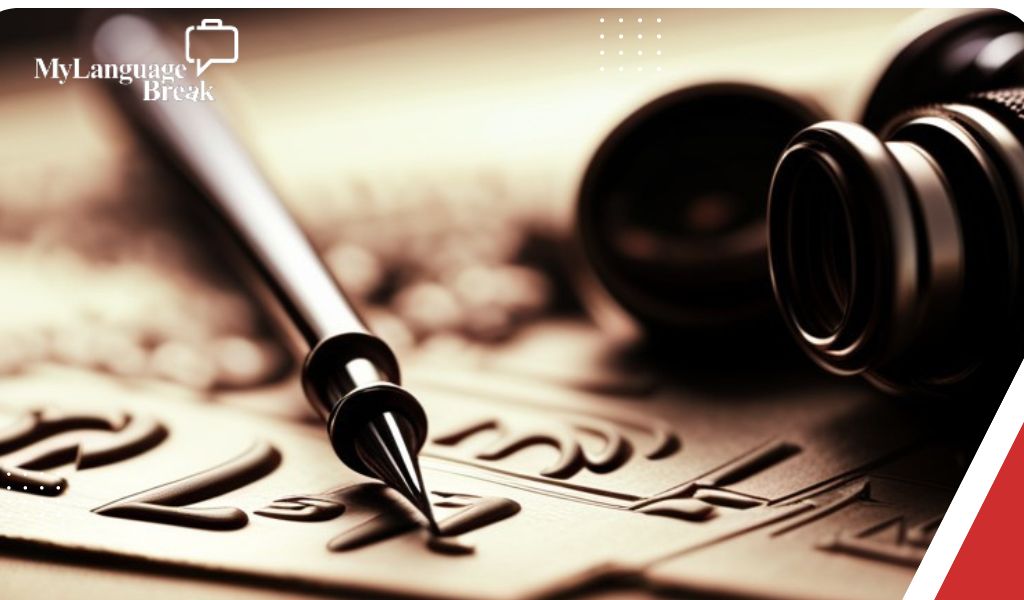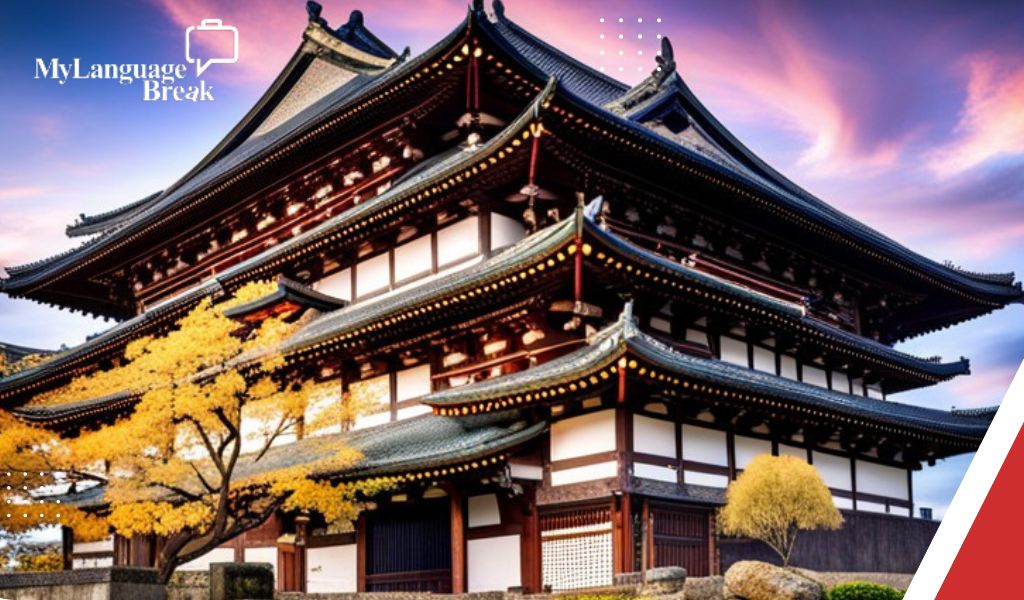If you’re looking to learn the Japanese alphabet, you’ve come to the right place! In this blog post, we will go over the alphabet of Japanese from A to Z. Each letter will be introduced with its corresponding pronunciation and example words. By the end of this post, you’ll be able to read and write in Japanese like a pro!

What are the Letters of the Japanese Alphabet?
It can be difficult to learn a foreign language, but it is even more difficult to learn a language that has three writing systems.
For example, Japanese is not as hard as one might think. The first step to learning a language is learning its alphabet.
Hiragana and katakana are both syllabifies, which means that each character represents a sound.
Kanji, on the other hand, are ideograms, which means that each character represents a concept.
There are a total of 46 characters in the hiragana alphabet and 50 in the katakana alphabet.
Kanji can range from one to several thousand characters.
Pronouncing the Japanese Alphabet
A good place to start when learning a foreign alphabet is to learn how to pronounce each letter. The following table shows the hiragana alphabet and its corresponding pronunciation.
Character & Pronunciation
- あ a
- い i
- う u
- え e
- お o
- か ka
- き ki
- く ku
- け ke
- こ ko
Konnichiwa! (Hello!) Now that you know the alphabet, you can start learning how to read and write in Japanese.
How Many Letters are in the Japanese Alphabet?
If you’re thinking that the Japanese alphabet is composed of 26 letters like English, think again!
There are also two ways to write Japanese: hiragana and katakana. Hiragana is used for writing native Japanese words, while katakana is used for writing foreign words.
So how can you learn all 50 letters of the Japanese alphabet?
Well, it’s actually not as difficult as it seems. The best way to start is by learning the basic 46 letters, which are made up of 40 hiragana and six katakana characters. After that, you can move on to learning the remaining four hiragana letters and all the katakana characters.

How does the Japanese Alphabet Work?
Hiragana and Katakana are both referred to as Kana. Kanji are the adopted Chinese characters used in the modern Japanese writing system.
While the Hiragana consists of 48 phonetic letters, it is a syllabify, meaning that each character represents a syllable.
Finally, Kanji can represent entire words on their own or be combined with other Kanji to form compound words. There are more than 50,000 Kanji characters, and most Japanese people know between 2,000 and 3,000 of them.
Because of this, Kanji are often thought of as the hardest part of learning Japanese. However, with some practice and patience, it is possible to master this fascinating writing system.
Why are there 3 Alphabets in Japan?
Japan has three writing systems: hiragana, katakana and kanji.
Hiragana is used for native Japanese words, katakana for foreign words, and kanji for Chinese loanwords. But why does Japan need three different alphabets?
Part of the reason has to do with history. Hiragana and katakana both developed from a system of pictographic characters known as kanji.
Over time, these characters were simplified and came to be used as phonetic symbols, representing syllables rather than whole words.
As the use of kanji grew more widespread, it became necessary to develop a way to write them using the smallest possible number of strokes.
This led to the creation of two new syllabic scripts: hiragana and katakana. The other reason for the existence of three writing systems is that they serve different functions.
Hiragana is primarily used for sentence structure and grammatical elements, while katakana is used for emphasis or to convey a sense of sharpness. Kanji, on the other hand, can convey a lot of information in just a few strokes, making it an efficient way to write long passages of text. As a result, it is often used for technical or academic writing.
So, while it may seem like a lot of work to learn three different alphabets, each one serves a distinct purpose and can be used in different situations. With some practice, you’ll be able to use them all with ease!
Learning the Japanese Alphabet is the First Step to Learning the Language
Japanese Alphabet Charts
If you’re interested in learning the Japanese alphabet, there are a few resources that can be extremely helpful. One of the most useful is a Japanese alphabet chart.
These charts provide a quick and easy way to look up the correct characters for each letter of the alphabet.
They also provide stroke order diagrams, so you can see how to write each character correctly.
Best of all, Japanese alphabet charts are free and readily available online.
So if you’re ready to start learning the Japanese alphabet, be sure to find a good chart to use as a reference. With a little practice, you’ll be writing like a native in no time!
Japanese Alphabet: Hiragana
Each character represents a single sound, and can be used to write both native Japanese words and words of foreign origin.
Kanji, on the other hand, are Chinese characters that were adopted by the Japanese centuries ago.
Today, kanji are used mainly for writing nouns, adjectives and verbs. However, all three scripts are often used in a single piece of writing, with each script serving a different purpose.
The first step in learning the Japanese alphabet is to familiarize yourself with the basic hiragana characters. Once you know the basic characters, you can begin to combine them to form syllables.
For example, the character for “ka” can be combined with the character for “tsu” to form the syllable “katsu.” In addition, some hiragana characters can be modified slightly to change the sound they represent.
For instance, the character for “sa” can be written with a small circle next to it to represent the sound “shi.” These modified characters are known as dakuten and handakuten, respectively.
Learning all of the possible hiragana combinations can seem like a daunting task, but don’t worry!
Japanese Alphabet: Katakana
While hiragana is used mainly for writing native Japanese words, katakana is typically used for words of foreign origin.
For example, the English word \”coffee\” would be written as コーヒー in katakana. Likewise, the word \”computer\” would be written as コンピュータ in katakana.
In addition, katakana is often used for onomatopoeic words, which are words that imitate the sound they represent. For instance, the word キャッキャ (kyacca), which imitates the sound of laughter, would be written in katakana.
Katakana characters can also be combined to form syllables, just like hiragana. In addition, some katakana characters can be modified slightly to change the sound they represent.
For instance, the character for “ta” can be written with a small circle next to it to represent the sound “tsu.” These modified characters are known as dakuten and handakuten, respectively.
Learning all of the possible katakana combinations can seem like a daunting task, but don’t worry!
Japanese Alphabet: Kanji
Kanji are the third and final script used in Japanese writing. Kanji are Chinese characters that were adopted by the Japanese centuries ago.
Today, kanji are used mainly for writing nouns, adjectives and verbs. However, all three scripts are often used in a single piece of writing, with each script serving a different purpose.
There are thousands of kanji characters, and most Japanese people only know the basic ones.
In fact, you can get by with knowing just a few hundred kanji if you’re only interested in reading and writing simple sentences.
That being said, learning even a small number of kanji can seem like a daunting task.
Don’t worry, though! Start by learning the most common kanji characters, and then work your way up to the more difficult ones. Kanji Compound Words.
One of the most difficult things about learning kanji is that they often have multiple readings.
For instance, the kanji for \”tree\” can be read as either き (ki) or 木 (moku).
To make things even more confusing, these readings can change depending on the context in which the word is used.
Fortunately, there are some tricks you can use to determine the reading of a kanji character.
One such trick is to look for kanji compound words. A kanji compound word is a word consisting of two or more kanji characters.
For example, the word 電車 (densha), which means “train,” is made up of the Kanji characters for “electricity” and “car.”
In this case, the Kanji character for “electricity” is read as でん (den), while the Kanji character for “car” is read as しゃ (sha).
Therefore, the word 電車 (densha) is read as でんしゃ (densha).

Romanized Alphabet for non-japanese speakers : Romaji
The Romanized form of Japanese. This makes it possible for non-Japanese speakers to read and write in Japanese without having to learn the various scripts.
It can also be helpful for Japanese speakers when learning to read and write in English. While romaji is not an official writing system, it remains a useful tool for those looking to bridge the language barrier.
Japanese Phrases for Everyday Use
No matter where you travel, it is always helpful to know some basic phrases in the local language. This is especially true in Japan, where the language can be quite different from English. However, with a little effort, it is easy to learn some essential Japanese phrases that will make your trip much smoother. Here are a few of the most useful Japanese phrases for travelers:
- Konnichiwa (Hello)
- Arigatou (Thank you)
- Onegai shimasu (Please)
- Sumimasen (Excuse me/Sorry)
- Hajimemashite (Nice to meet you)
With these basic phrases, you will be able to greet people, express thanks, and apologize when necessary. While you may not be able to have in-depth conversations using only these phrases, they will nonetheless be invaluable in helping you navigate your way around Japan.
Greetings and Goodbyes in Japanese
Greetings and goodbyes in Japanese are very important. The way you greet someone shows respect and is a sign of politeness.
There are many different types of greetings, depending on the time of day and the relationship between the people.
Some common greetings include “ohayou gozaimasu” (good morning), “konnichiwa” (hello), and “sayounara” (goodbye). It is also important to know how to bow, as this is a gesture of respect that is used often in Japanese culture.
To bow, simply bend at the waist with your hands at your sides. The deeper the bow, the more respect you are showing. When greeting someone, it is also considered polite to exchange cards and gifts. By taking the time to learn these simple customs, you will be sure to make a good impression when meeting new people in Japan.
What is the Most Common Japanese Alphabet?
Kanji is by far the most common. It is estimated that there are over 50,000 different kanji characters in use today.
Hiragana and katakana are both alphabetic scripts, with each character representing a single sound.
Together, these three writing systems form the basis of the Japanese language. While kanji is the most common writing system, it is not always the easiest to learn.
For this reason, many beginners prefer to start with hiragana or katakana before moving on to kanji.
However, all three writing systems are essential for being able to read and write Japanese fluently.
Is Japanese read Right-to-Left or Left-to-Right?
The Japanese writing system is complex, and it can be difficult for outsiders to understand. One common misconception is that Japanese is always written from right to left.
In fact, the direction of writing depends on the type of text.
For instance, horizontal texts such as prose and novels are typically written from left to right, while vertical texts such as poems and song lyrics are written from right to left.
There are also certain instances where text may be written in both directions; for example, when quoting another piece of text or when listing a series of items. As a result, the answer to the question “Is Japanese read Right-to-Left or Left-to-Right?” is not always straightforward.
Nevertheless, understanding the basic principles of the Japanese writing system can help to make the task of reading Japanese less daunting.
Tips for Learning the Japanese Alphabet, Fast
The Japanese alphabet, called “hiragana,” can seem daunting at first. But with a little practice, it’s not as hard as it looks. Here are a few tips to help you learn a hiragana quickly and easily.
First, start by learning the basic shapes of the hiragana characters. There are only a handful of different strokes that are used over and over again to make up the different characters. Once you know the basic strokes, it will be much easier to remember how to write each character.
Next, focus on learning the most common characters first. There are a few hundred hiragana characters in total, but you only need to learn a fraction of them to be able to read and write Japanese effectively. By starting with the most common characters, you’ll be able to build up your knowledge gradually and won’t get overwhelmed by too many new things at once.
Finally, don’t forget to practice writing hiragana characters in words and sentences. Just like with any language, the more you use hiragana, the better you’ll become at reading and writing it.
Conclusion
Learning the Japanese alphabet is a necessary first step in learning the language. While it may seem daunting at first, with a little practice, it’s not as hard as it looks.
Start by learning the basic shapes of the characters, then focus on the most common ones. And don’t forget to practice writing hiragana in words and sentences.
Do you want to learn more about the Japanese language?

Comments